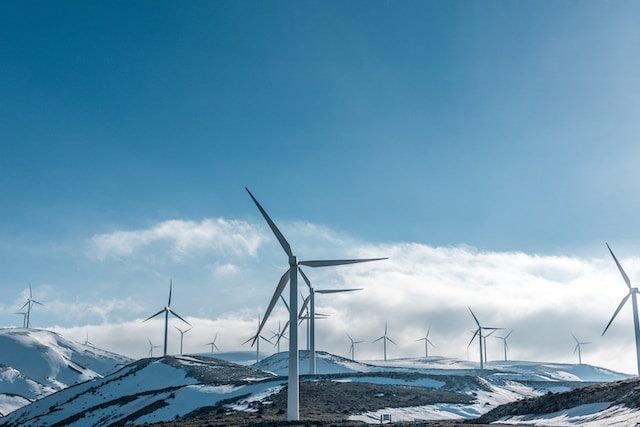
When it comes to harnessing the power of wind energy, vertical turbines play a crucial role. These innovative systems are designed to efficiently convert wind energy into electrical power. In this article, we will explore two different types of vertical turbines: gear-driven and direct-drive systems. By understanding the differences and benefits of each system, you can make an informed decision when choosing a vertical turbine for your renewable energy project.
Gear-Driven Systems
Gear-driven vertical turbines, as the name suggests, employ a complex system of gears to transmit the rotational energy from the wind turbine blades to the generator. These systems have been widely used in the wind energy industry for many years, and they offer several advantages:
- High Efficiency: Gear-driven systems have a high level of mechanical efficiency, meaning they efficiently transfer the wind energy to the generator.
- Adaptability: The gear system allows the turbine to adapt to varying wind speeds and adjust the rotor speed accordingly.
- Cost-Effectiveness: Due to their long history and widespread use, gear-driven systems are generally more affordable and easier to maintain compared to direct-drive systems.
Types and Examples of Gear-Driven Systems
There are various types of gear-driven systems available on the market. One common example is the traditional windmill, which utilizes a gear mechanism to turn the rotary motion of the blades into rotational energy. Another example is the Darrieus wind turbine, characterized by its vertical-axis design and S-shaped blades.
Direct-Drive Systems
Direct-drive vertical turbines, on the other hand, do not rely on a complex system of gears. Instead, the turbine blades are directly connected to the generator, eliminating the need for an intermediate mechanism. Direct-drive systems offer unique advantages:
- Higher Reliability: With fewer mechanical parts, direct-drive turbines are generally more reliable and have a longer lifespan.
- Increased Energy Production: The direct connection between the blades and the generator allows for more efficient power transmission, resulting in higher energy production.
- Reduced Maintenance: Without the complications of a gear system, direct-drive turbines require less maintenance and are less prone to breakdowns.
Types and Examples of Direct-Drive Systems
There are several types of direct-drive systems available today. One notable example is the Savonius wind turbine, characterized by its unique cup-shaped blades that capture the wind from all directions. Another example is the Darrieus wind turbine, which we previously mentioned as a gear-driven system. However, some variations of the Darrieus turbine utilize a direct-drive system.
Which System to Choose?
When deciding between a gear-driven and direct-drive system, there are several factors to consider:
- Power Output: Evaluate the power requirements of your project and determine which system can meet your energy production goals.
- Budget: Consider your budget and the long-term costs associated with the installation, maintenance, and efficiency of the turbine system.
- Location: Assess the wind conditions at your site and determine which system is better suited to harness the available wind energy.
- Reliability: Think about the reliability and lifespan of the system, as well as the availability of spare parts for repairs.
Ultimately, both gear-driven and direct-drive systems have their own unique advantages and factors to consider. It’s important to thoroughly research and consult with experts to determine the best system for your specific needs.
Conclusion
Vertical turbines are an increasingly popular choice for renewable energy generation. Gear-driven systems offer high efficiency and adaptability, while direct-drive systems provide increased reliability and energy production. By understanding the differences and considering various factors, you can make an informed decision when selecting a vertical turbine system for your project.
